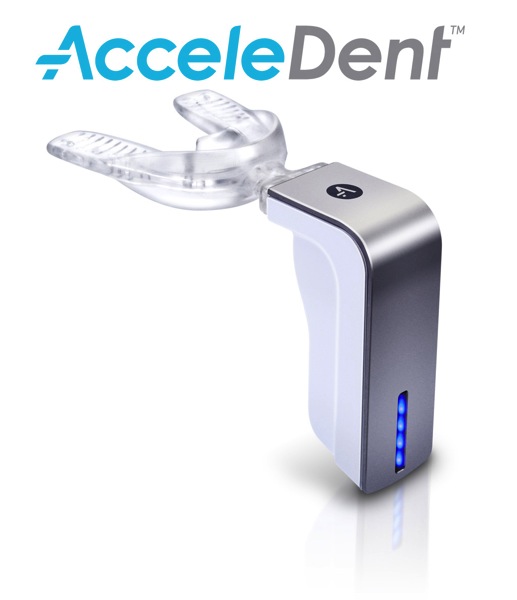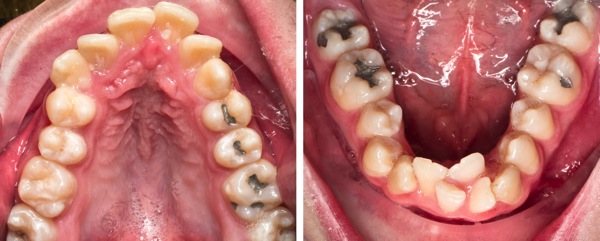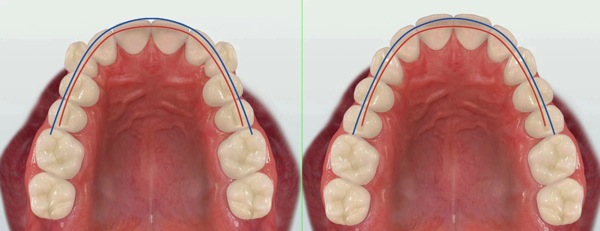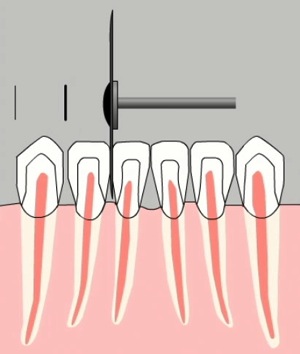-
3 Ways to Resolve Orthodontic Crowding
Reply
The most common orthodontic problem is crowding. By definition, crowding occurs when the width of the teeth, in either the upper or lower jaw, is greater than the amount of space available. Crowding takes many different shapes and forms and no two instances will be the same. Crowding results in maligned or crooked teeth and may result in rotated teeth, overlapping teeth, and/or in and out discrepancies between adjacent teeth. Crowding may also preclude teeth from erupting into the arch form and may result in impacted teeth (teeth stuck in the bone).
In the ideal scenario, the upper and lower teeth are evenly aligned so that the all of the edges of the front teeth are aligned along a continuous arc. As the arc straightens out in the posterior portions of the jaws, the central grooves that run through the middle of the posterior teeth should line up.
There are three primary reasons that it is preferred to resolve orthodontic crowding.
- When there is overlapping teeth (rotations in conjunction with in/out discrepancies) it can be more difficult to effectively access the areas between the teeth for cleaning. This has a detrimental impact on oral hygiene and can lead to a number of problems some of which include, a localized periodontal disease and bone loss between the teeth and tooth decay.
- It goes without saying that it is more esthetic to have the upper and lower teeth evenly aligned. Even those with very little knowledge about dentistry can appreciate the esthetic compromise of poorly aligned teeth secondary to crowding.
- In order to construct the ideal bite, or relationship between the upper and lower teeth, it is essential that the teeth are properly aligned. Maligned teeth can result in all types of problems with the bite (to be covered in future blog posts).
Ultimately, the three benefits to properly aligned teeth void of any rotations and/or in and out discrepancies are that they improve access for cleansability and proper oral hygiene, it is enhances dental esthetics and the attractiveness of the smile and it allows for the upper and lower teeth to fit together well.
That being said what modalities are available in order to resolve orthodontic crowding.
There are three ways to resolve crowding.- Expansion (image below)
- Extraction
- Interproximal Reduction
One way to resolve crowding is through the expansion of the upper and lower dental arches. If the arc that the teeth are aligned on expands in width and length there is more space to align the teeth. This allows for the resolution of the discrepancy in width of the teeth relative to the amount of space available. After arch expansion the perimeter of the arc that the teeth are aligned upon is greater or longer thereby offering more space to resolve the crowding.
A second way to resolve orthodontic crowding is to create space through the extraction of permanent teeth. There are many different extraction patterns that can be implemented and there are many factors that must be considered in choosing the appropriate extraction pattern. Ultimately by taking teeth out, you gain the space equivalent to the amount of space that tooth took up within the arch. That is to say, if two teeth that were straight were extracted and they totaled 14mm in width (a premolar is usually between 7 and 7.5mm in width) then you would gain 14mm.
A third and final way to resolve crowding is through interproximal reduction or polishing between teeth. From a conceptual stand point interproximal reduction involves removing a small amount of tooth structure between teeth. Although the amount of space gained is relatively small, when interproximal reduction is done in multiple sites within the arch several millimeters of space can be gained. For example, lets say interproximal reduction was done between the lower front 6 teeth (5 sites). If 0.2mm of interproximal reduction is done at each site (0.1mm of enamel reduction on each tooth at the site of polishing) you would gain a total of 1.0mm. Usually interproximal reduction is limited to no more than 0.5mm between teeth. It is also worth noting that there are other reasons in which an orthodontist may perform interproximal reduction.
Now that we have reviewed the modalities available to resolve crowding we have to discuss what factors must be considered in order to choose the most appropriate treatment option. Stay tuned for another post regarding what factors are involved in choosing the appropriate modality to resolve crowding.
-
With FDA Approval and a Version 2.0, Humphries Orthodontics now offers AcceleDent

One of the biggest concerns about orthodontic treatment is the amount of time it takes to establish sensational esthetics with proper function. The saying often goes that patients would like to have their teeth straightened yesterday but they didn’t start treatment until today. In recent years, orthodontists, including Dr. Sage Humphries, have used a surgical technique in conjunction with their orthodontic treatment in order to dramatically increase the rate at which teeth move. This procedure is commonly referred to as accelerated accelerated osteogenic orthodontics or Wilckodontics. For many patients the cost and morbidity of the surgical procedure do not justify the surgery, despite their desire to reduce treatment time.
Humphries Orthodontics is now offering an orthodontic device called AcceleDent that reduces treatment time and in many instances reduces the discomfort typically associated with orthodontic tooth movement. Acceldent recently introduced their second generation device and also gained FDA approval. The device has been proven to be safe and effective in independently conducted clinical trials. AcceleDent has been shown to reduce treatment time by up to 50%.
So what is AcceleDent? AcceleDent is a hands free device that delivers gentle micropulses to the jaws. This technology is actually not new. It has been used in orthopedics for years for the treatment of fractures. AcceleDent has introduced this technology to orthodontics with their revolutionary device. Part of the way that teeth move is by remodeling the bone that supports them. The micropulses help to recruit the cells necessary to accelerate the remodeling process.
Using AcceleDent is simple. The patient just bites into the mouthpiece with enough force to hold the device in the mouth. The device is to be used for 20 minutes everyday for the duration of treatment. The device does not change the way that teeth move it just makes them move faster. For that reason, AcceleDent can be used with braces and Invisalign.
If you have always wanted that perfect smile, and have held back due to concerns about the time treatment will take, or the discomfort associated with treatment, you might be a great candidate for AcceleDent. Ultimately, AcceleDent is a great option for anybody that wants to reduce their orthodontic treatment time and make the experience as comfortable as possible.





